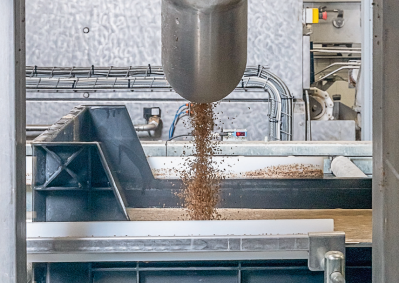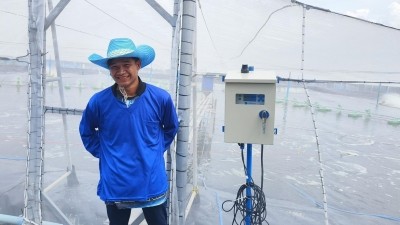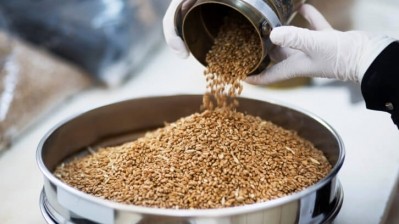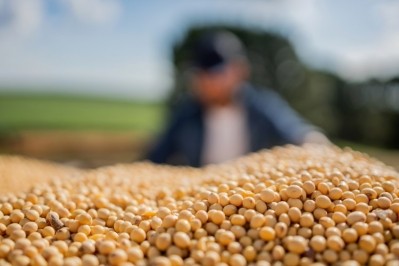Study finds sustainable insect-based poultry feed garners lower weight gain
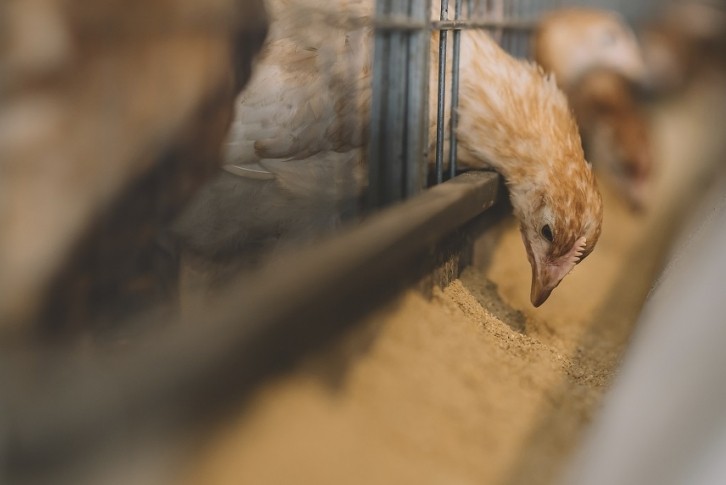
The production of soybean meal (SBM) has a substantial impact on the environment and reducing its inclusion in poultry diets by using alternative protein sources, such as insect meal, is an important challenge for nutritionists.
Researchers from the Faculty of Agriculture, Trakia University, Bulgaria and the National Institute of Poultry Husbandry, in the UK, therefore conducted a study with the aim to compare the productive performance of broiler chickens fed one of two isonitrogenic (195 g/kg CP) and isocaloric (12.91 MJ/kg) diets.
The authors assert the results raise concerns around a complete replacement of dietary SBM with BSFL meal.
They conclude: “The present study shows that dietary inclusion of 16% BSFL meal as a complete replacement of SBM reduced dietary available energy and nutrient digestibility, leading to reduced growth performance of broiler chickens.
“These effects may have been associated with high dietary chitin content and inaccuracies in dietary formulation assumptions regarding NPN and fat digestibility values. However, feeding BSFL reduced excreta moisture content, suggesting that BSFL meal may be beneficial in improving litter quality.
“It seems that a partial replacement of SBM with BSFL may be more appropriate than a complete replacement unless all other factors (e.g., insect processing technology, feed additive supplementation, mineral balance and AA supplementation) have been considered."
The sustainability issue
To meet the growing global demand for poultry meat, production has increased from 9 million tonnes in 1961 to 133 million tonnes in 2020.
Intensively reared meat birds require over 20% of high-quality dietary protein, including the indispensable amino acid lysine, which is usually the first limiting amino acid.
Soybeans contain high levels of crude protein comprising of amino acids, including lysine and other important nutrients, making them valuable for the poultry feed sector. However, due to growing global demand for soybean meal, the price is continuously increasing, thus making SBM one of the most expensive components in typical non-ruminant diets.
In addition, soybean production is increasingly associated with change of land use (e.g., deforestation), resulting in a negative impact on the environment. Although research has been carried out on the use of various European produced plant protein sources, there are still limits on the suitability of their amino acid profiles, nutrient availability and yield. Thus, there is a requirement for new, sustainable and easy-to-produce alternative protein sources.
Terrestrial invertebrates, e.g., insects, are considered a promising high-quality sustainable source of dietary fat and protein for poultry. However, the feeding value of insects for poultry is variable, particularly due to processing methods (e.g., heating, drying).
Therefore the optimum amount of insect meal that can be incorporated in poultry diets to guarantee optimal animal productive performance needs to be established.
The study
The newly published experiment was conducted at the poultry research facility of Trakia University using a total of 80 day-old female broilers.
The broilers were weighed at the beginning and end (after 18 days) of the experiment and separated into pens with wire-mesh floor to allow for collection and analysis of faeces.
The insect meal sample used in this experiment was from larvae of the Black Soldier Fly (Hermetia illucens L.; Diptera: Stratiomyidae) and was purchased from HexaflyTM (Navan, Co., Meath, Ireland).
The first diet contained SBM as the main protein source, whereas SBM was completely replaced by defatted meal from Black Soldier Fly larvae (BSFL) in the second diet.
The BSFL meal contained 512 g/kg crude protein (CP), 171 g/kg crude fat (CF), 85 g/kg ash, 319 g/kg neutral detergent fibre (NDF), 82 g/kg Acid detergent fibre (ADF), 26.7 g/kg lignin, 55.3 g/kg chitin, 9.0 g/kg calcium and 6.9 g/kg phosphorus, from which 5.2 g/kg was available.
Among the indispensable AAs, the contents of leucine, lysine and valine were the highest, and the lowest content was determined for methionine. Glutamic and aspartic acids were the main dispensable AAs, with cystine having the lowest content.
The SBM diet contained 35 g/kg more crude fat but had 15 g/kg less CP compared to the BSFL diet. The SBM diet also contained more ADF and ADL, but less NDF than the BSFL diet.
There were no differences (p > 0.05) in initial bird BW. Final BW and WG of birds fed SBM diet was about 17% higher and they utilised feed 19% more efficiently compared to BSFL-fed birds (p < 0.05).
There was no difference in NDF digestibility (NDFD) between the two diets (p > 0.05). However, the ADF digestibility (ADFD) of the SBM diet was approximately 44% greater (p < 0.001) compared to BSFL diet.
The moisture of fresh excreta was 6% higher in birds fed the SBM diet (p < 0.001). Birds fed SBM diet voided 23% more fresh excreta (p < 0.05) comparted to BSFL fed birds. No difference was observed between dry excreta voided (p > 0.05).
The authors suggest the reduced production performance of BSFL fed birds may be associated with the reduced dry matter digestibility, fat digestibility, ADF digestibility, N-corrected apparent metabolisable energy and the reduced ability of birds to utilise dietary energy. Despite the many functional benefits associated with chitin (e.g., as a potential prebiotic, as well as antimicrobial, antiviral and antifungal agent), it has often been characterised as an anti-nutritional factor.
The authors note that further research into standardising insect rendering and production methods should be prioritised by the industry.
Source: MDPI Poultry
https://doi.org/10.3390/poultry2030032
“Comparison of a Traditional Soybean Meal-Based Diet to a Defatted Black Soldier Fly Larvae Meal-Based Diet for Broilers”
Authors: Chobanova, S.; Karkelanov, N.; Mansbridge, S.C.; Whiting, I.M.; Simic, A.; Rose, S.P.; Pirgozliev, V.R.
